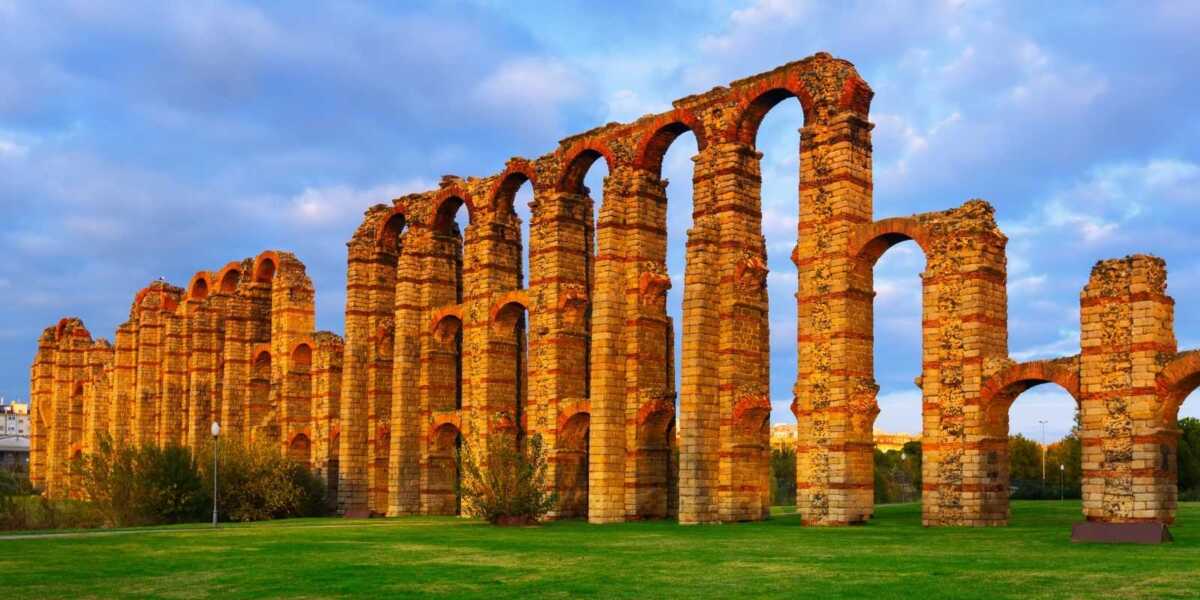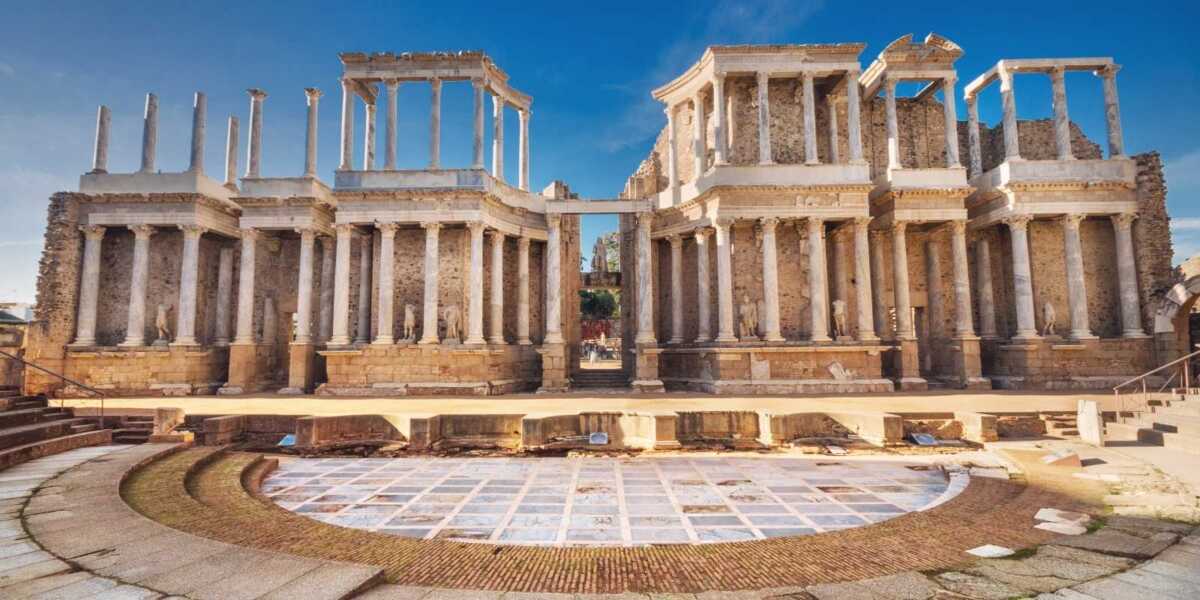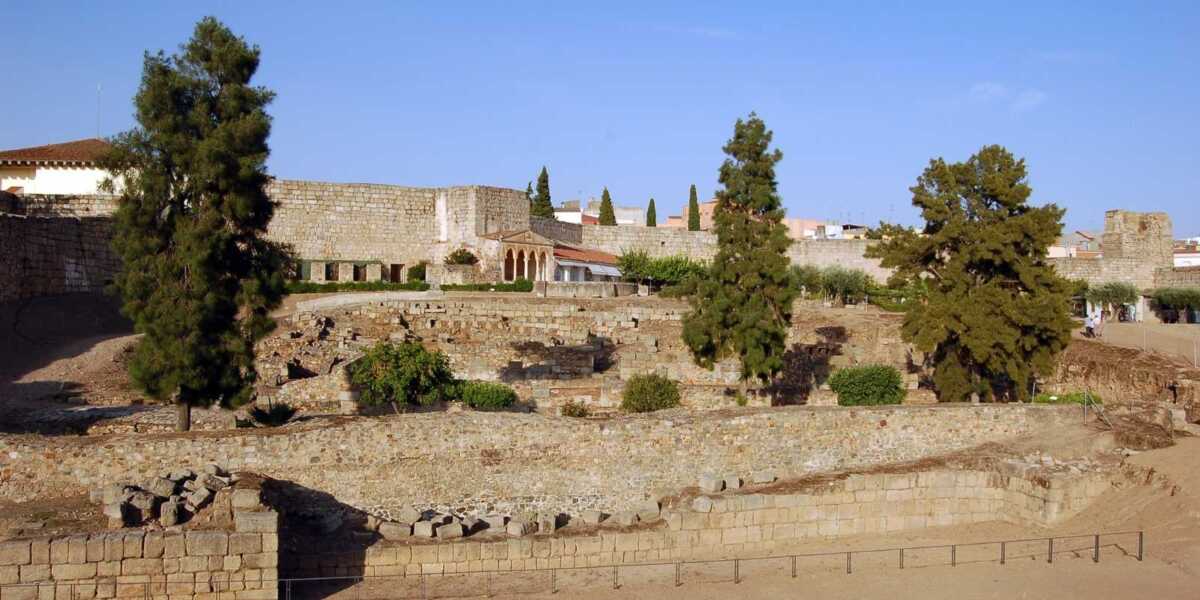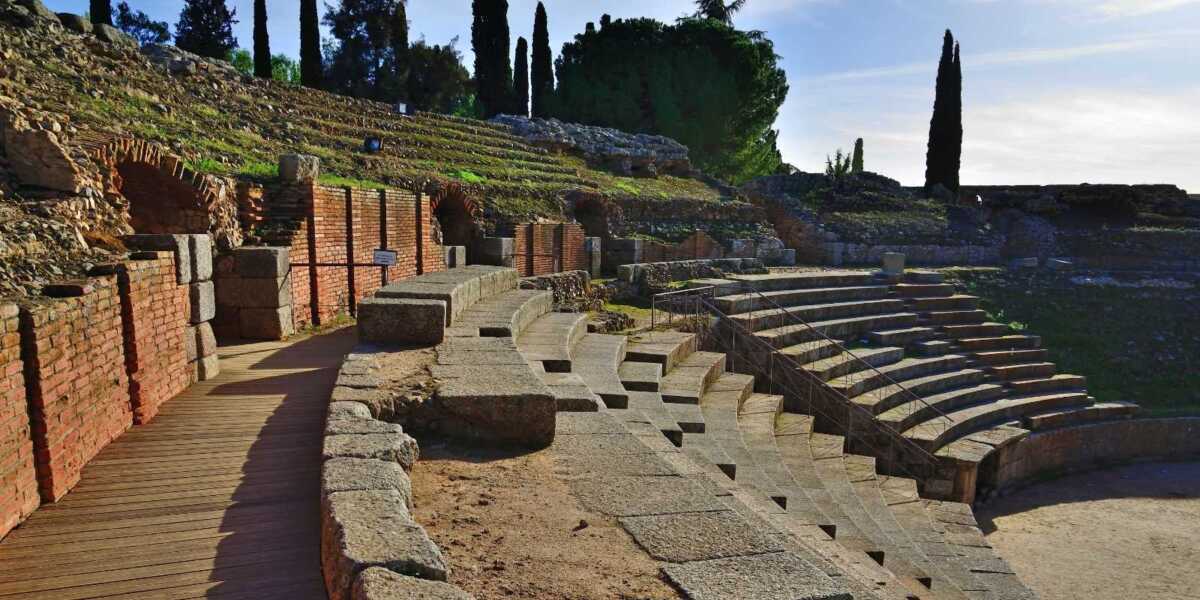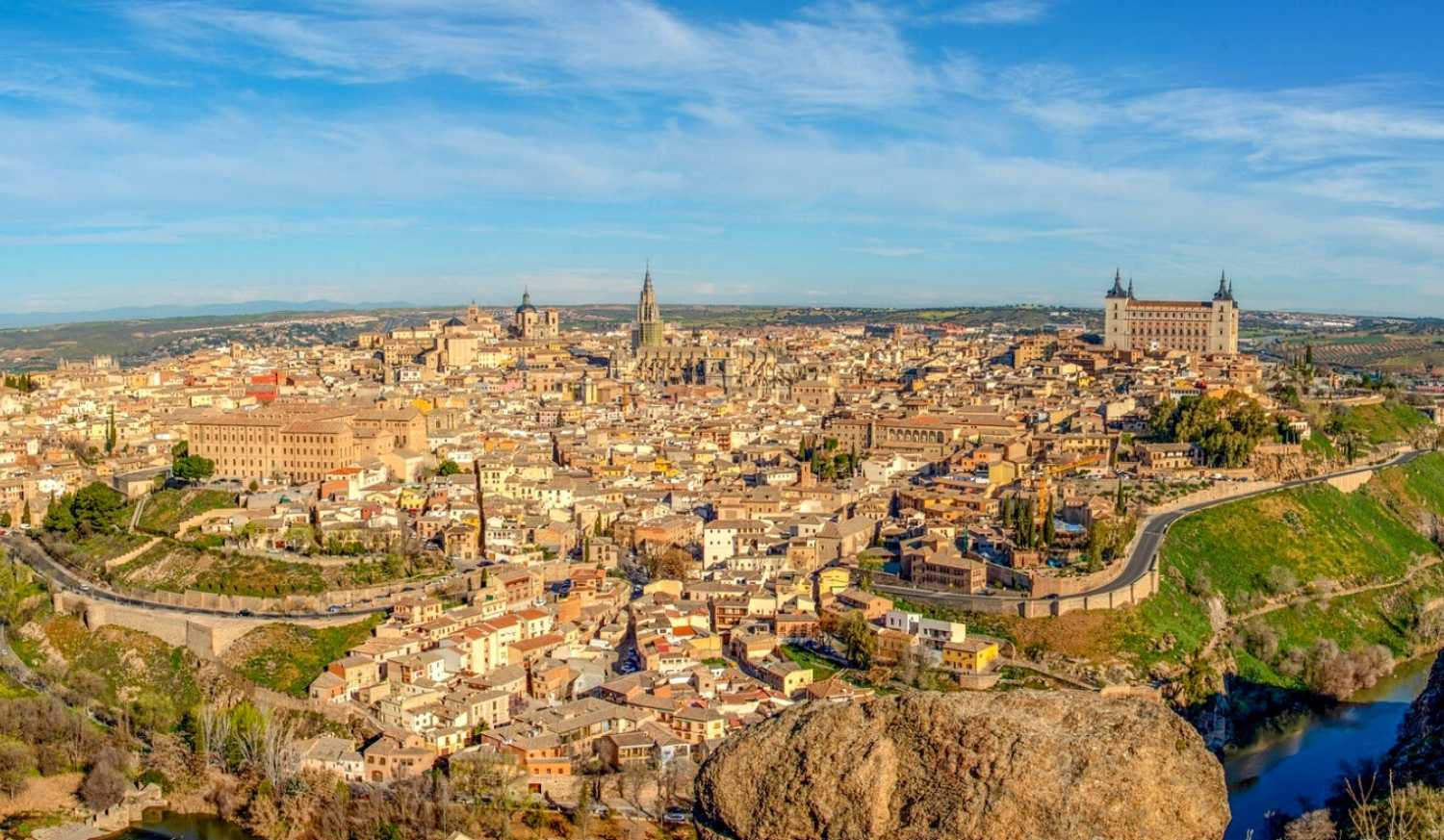
Information about Merida
Mérida is the ideal city to take a trip back in time and delve into the ancient Roman Empire. This place of incomparable historical charm is located in the province of Badajoz and has the tranquillity of a small quiet town with beautiful streets and charming squares. Its historical-artistic heritage is unique, so much so that its Roman theatre is still functioning after 2,000 years of existence. It provides a unique experience to the traveler who can be magically transported back in time and live a dream during their stay.
What to see and do in Merida
The Aqueduct of Miracles
The colossal aqueduct is part of a great hydraulic conduction and is colloquially known as Los Milagros (The Miracles) because of its fascinating conservation despite the passage of time. For its construction were used various materials such as brick, ashlar, masonry and natural rock. It has semicircular arches reinforced by arches of different heights and the construction has areas that reach up to 25 meters high. It is of great beauty and provides one of the most different landscapes that can be found.
The Roman Theatre
The essential Roman Theatre of Merida was built between 16 and 15 B.C., when the Colony was promoted as provincial capital of Lusitania. This building is extraordinary for many reasons: in fact, Romans themselves were not particularly fond of theatre and yet they built an enclosure for stage plays at this special villa. It has a capacity for 3 thousand seated attendees and was built on the hill of San Albín, which especially favors its acoustics. Behind the front wall of the stage there is a large porticoed garden enclosed by walls with niches. These were decorated with statues of members of the imperial family. It is a unique legacy that is a must-see in the city of Mérida.
The Arab Alcazaba
The heritage of Merida does not end in the Roman world and makes a journey through several civilizations, in fact, this building shows Roman, Visigoth and Arab remains. It is a square fortress built by Abderramán II to prevent attacks, built with granite ashlars and walls with square redoubts. In medieval times it underwent some modifications in order to use it as a convent and as a residence. In the parade ground still remains the Roman cistern with barrel vault, located next to the river so that water filters continuously.
The National Museum of Roman Art
This museum is located very close to the Roman Theatre and is the work of the prestigious architect Rafael Moneo, opened in 1986. In its interior, as it could not be otherwise, it houses pieces of the Roman civilization whose passage was so essential to understand the city of Merida. They come mainly from the Theatre and the Roman House and are a collection of coins, pieces of ceramics or glass, as well as artistic works such as paintings and sculptures. A most interesting stop to understand the essence of this village and the history of civilization.
The Roman Amphitheatre
The Roman Amphitheatre of Mérida has a different nature and is more in keeping with the ancient times, since it gladiator fights took place there. It was inaugurated in the year 8 B.C. and it is located next to the theatre, taking advantage of the hill of San Albin hill, which they used so much in this glorious age. A cruciform moat can be seen in the center of the arena.
The Roman Temple of Diana
This temple of the goddess is an impressive construction of great size, it is intuited that it could have been the biggest of the ancient Merida in Roman times or, at least, one of the most imposing in its time. It is a rectangular building surrounded by columns, elevated on a base. It presents the classic picture that every traveler can have on the buildings of that and it is said that in the past also presented a garden with a pond around. In the 16th century, the structure of this temple was used as the basis for the construction of a palace for the Count of Corbos.
The Aqueduct of San Lazaro
Aqueduct of Saint Lazarus was one of those responsible for supplying water to Merida at Roman times. Three very robust pillars of a whole building that was more than a kilometre long are preserved. The pillars are joined by two stone arches that correspond to the lower floor of arcades, formed by eleven voussoirs and presents another interesting sight to contemplate in this town full of historical beauty.
The House of the Mithraeum
The Casa del Mitreo is a house built at the end of the 1st century and beginning of the 2nd century A.D. outside the city walls and without restrictions for its growth, of great interest for curious visitors in Merida. Studies on the style of its construction show that the owners were important members of the Emeritense society, trained in the Hellenistic culture. It presents three beautiful courtyards and the structure of a dwelling. The walls were plastered and decorated with paintings and in one of the rooms there is still a mosaic of the Cosmos. It depicts a colourful group of human figures that inspire the different components of the universe. It is of great architectural and artistic beauty.

